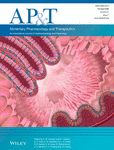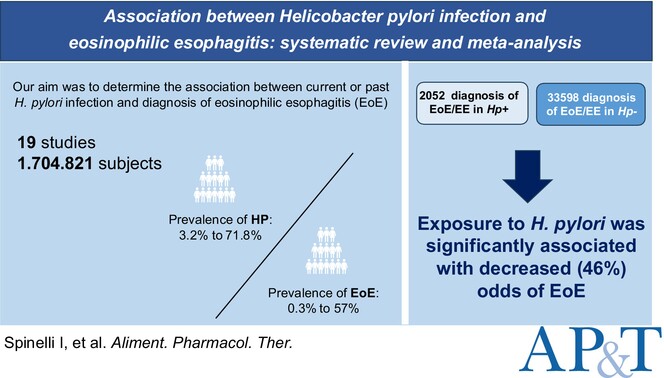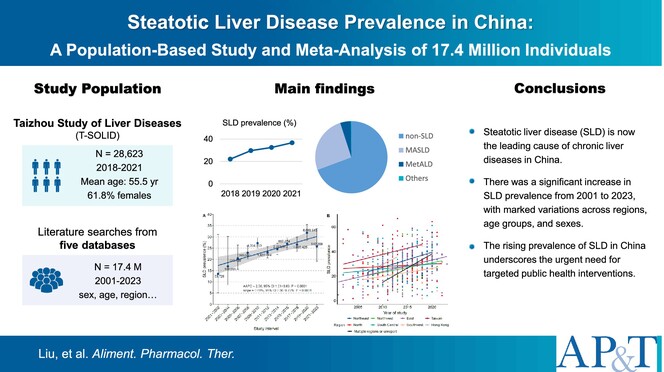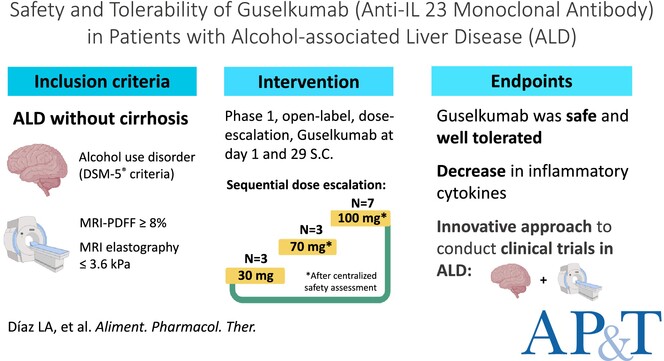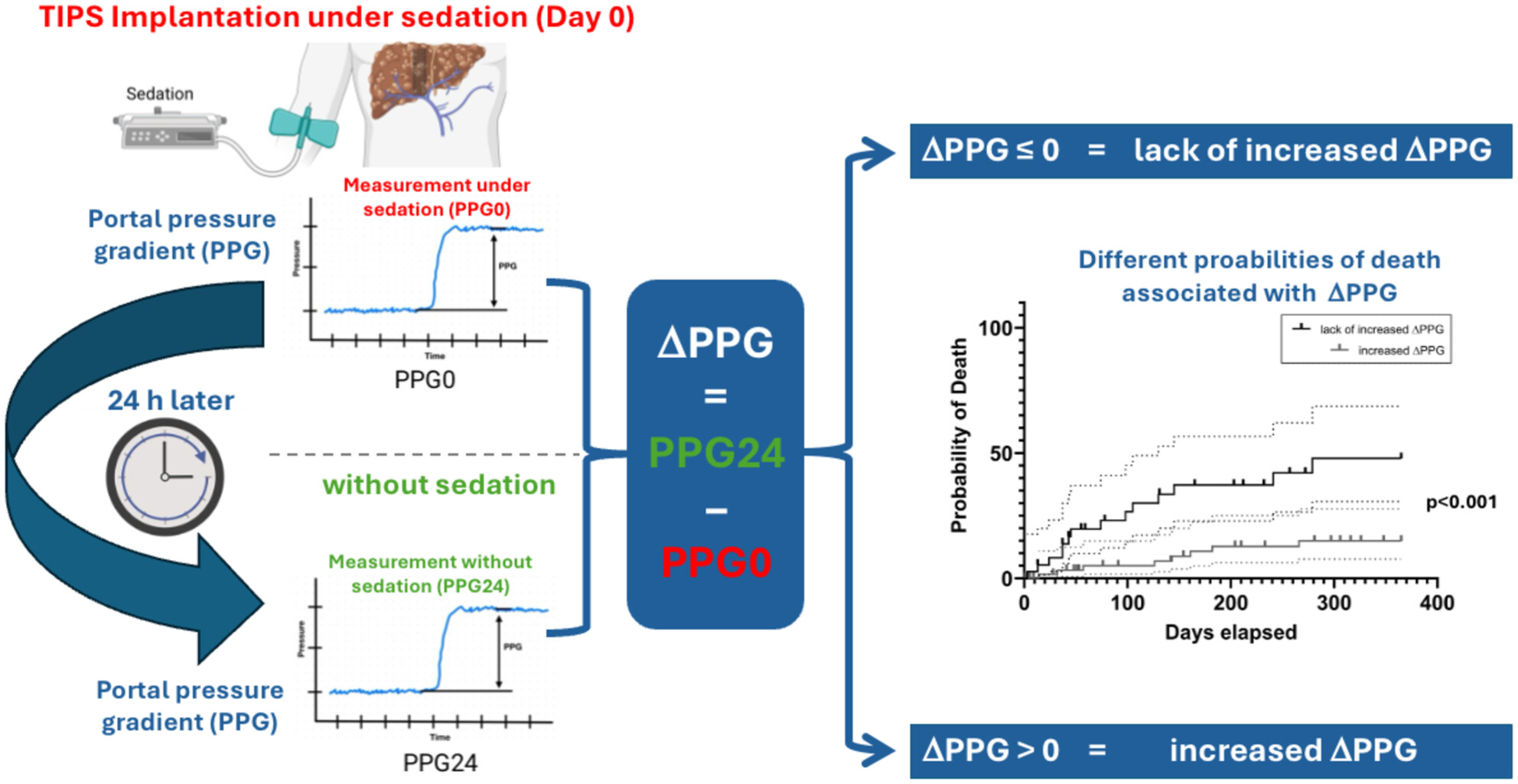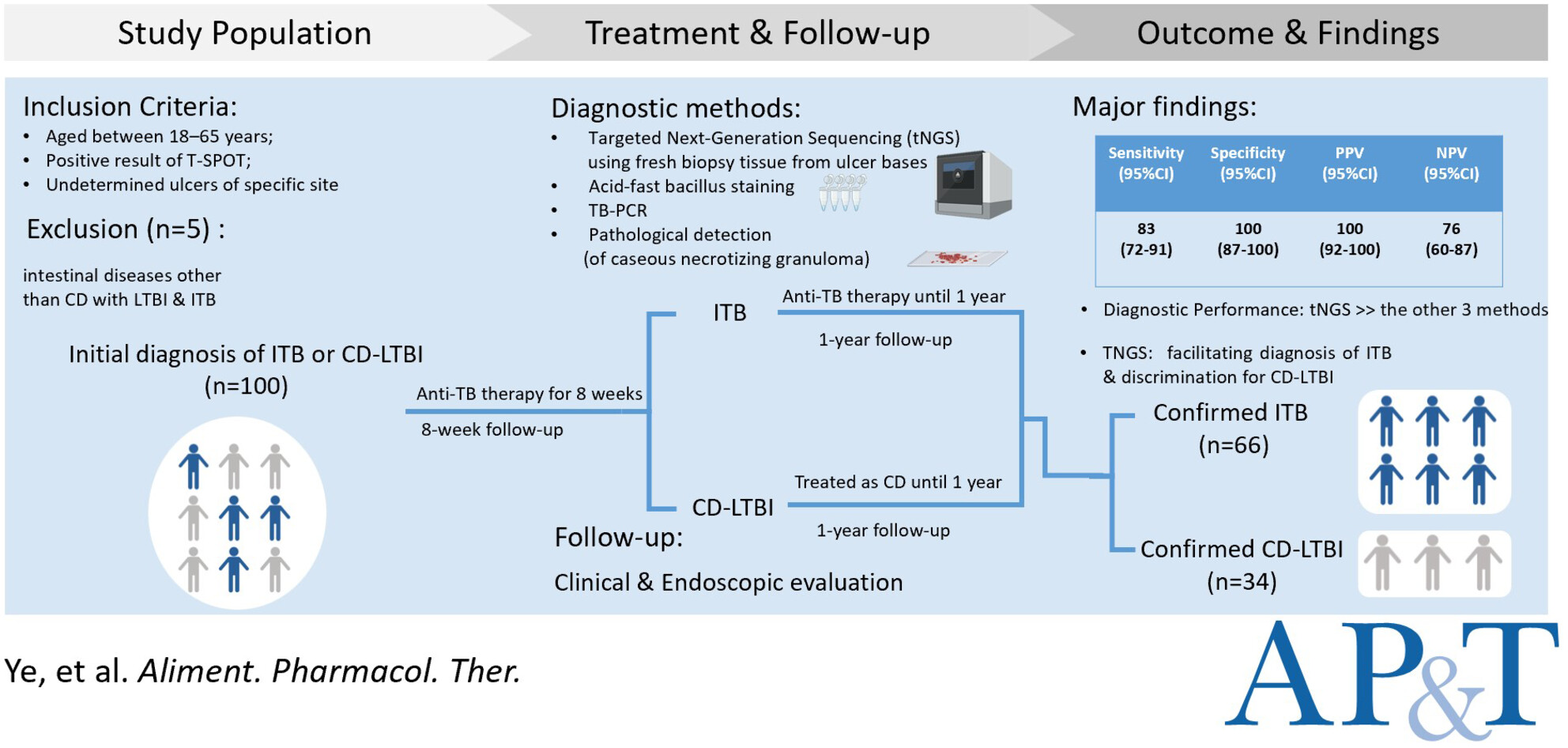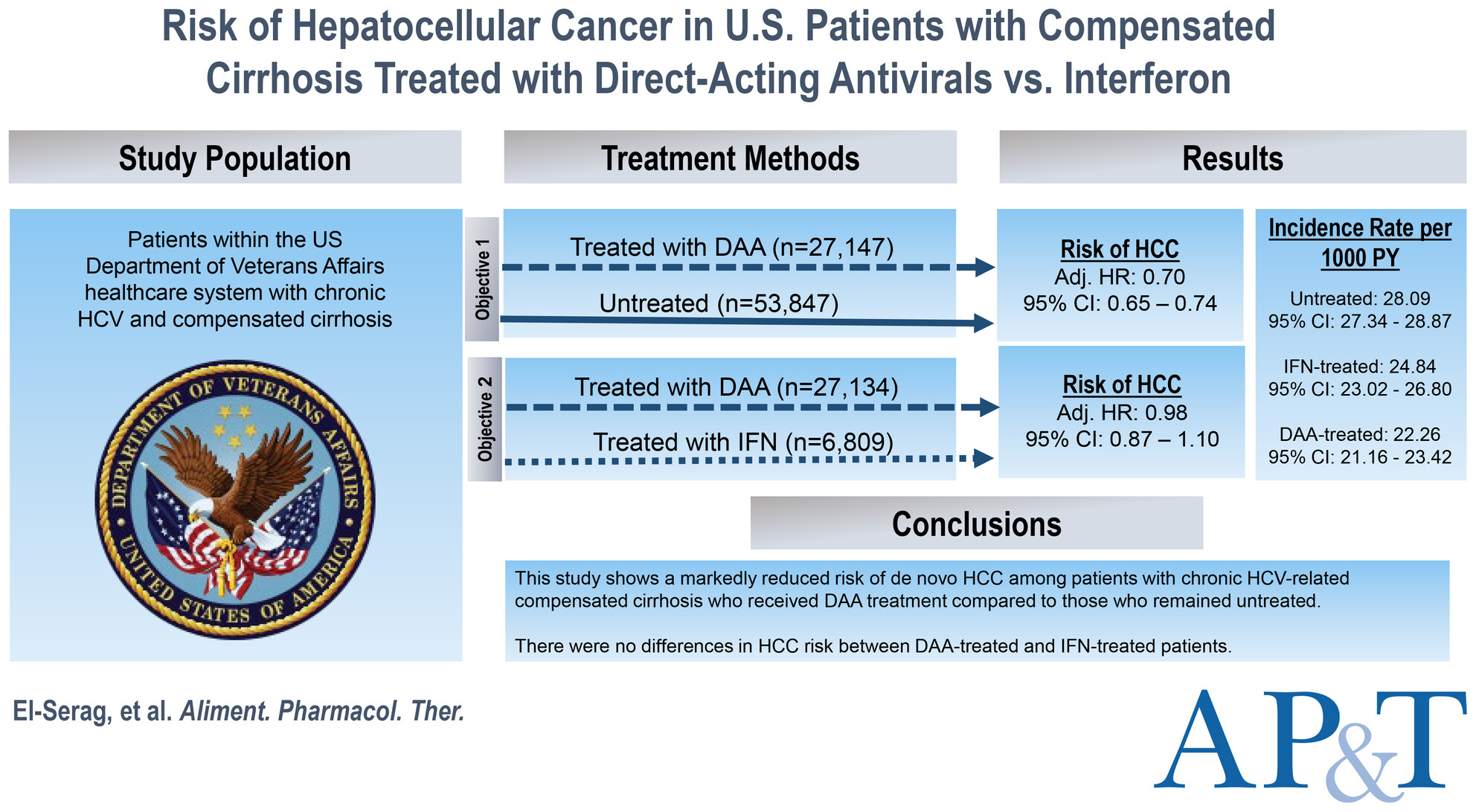Journal list menu
Export Citations
Download PDFs
FEATURED COVER
Featured Cover
- Page: i
- First Published: 01 April 2025
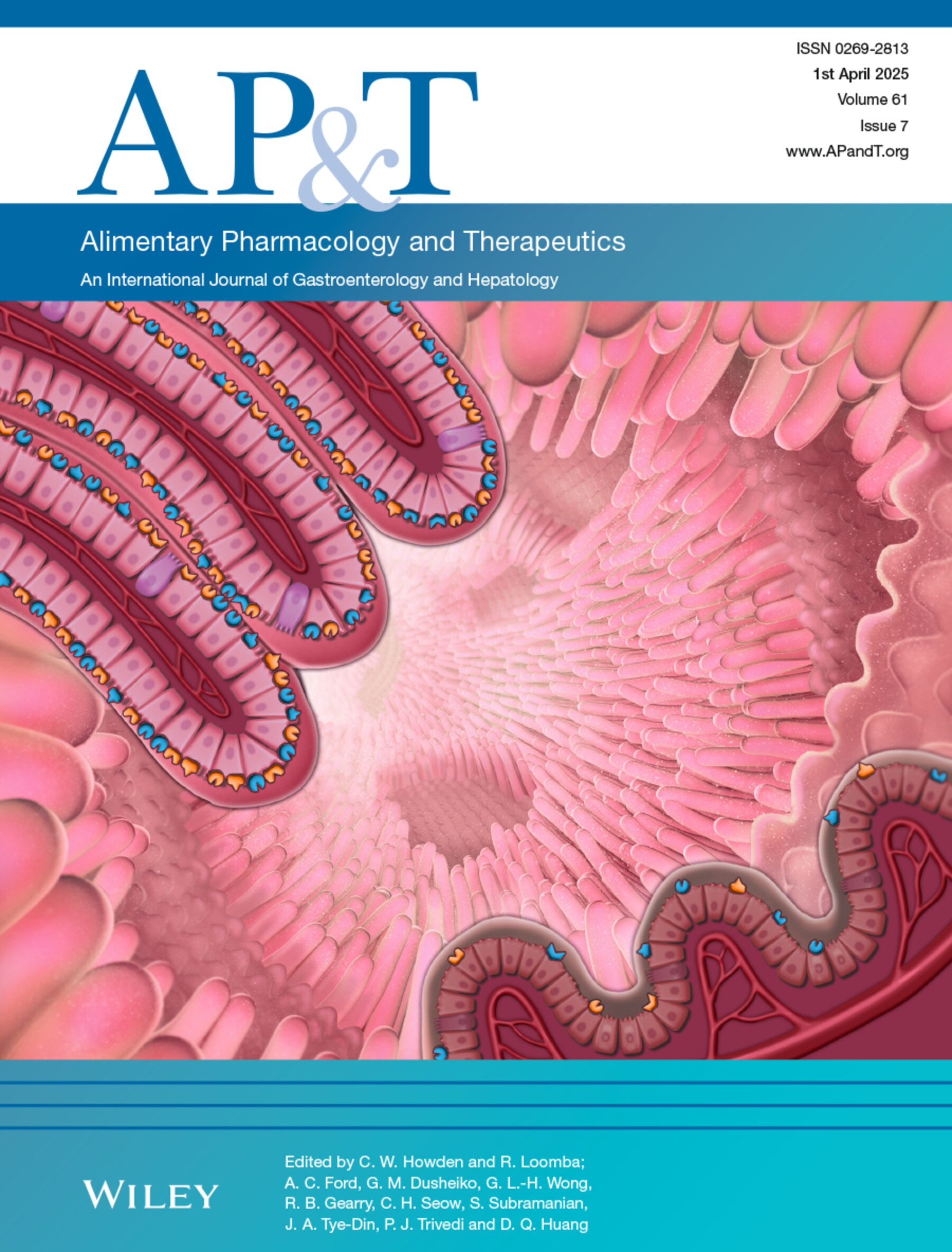
The cover image is based on the article Review Article: Novel Enzyme Therapy Design for Gluten Peptide Digestion Through Exopeptidase Supplementation by Erin R. Bonner et al., https://doi.org/10.1111/apt.70014
ISSUE INFORMATION
META-ANALYSIS
Meta-Analysis: Inverse Association Between Helicobacter pylori Infection and Eosinophilic Oesophagitis
- Pages: 1096-1109
- First Published: 24 February 2025
Steatotic Liver Disease Prevalence in China: A Population-Based Study and Meta-Analysis of 17.4 Million Individuals
- Pages: 1110-1122
- First Published: 27 February 2025
REVIEW ARTICLE
Review Article: Novel Enzyme Therapy Design for Gluten Peptide Digestion Through Exopeptidase Supplementation
- Pages: 1123-1139
- First Published: 16 February 2025
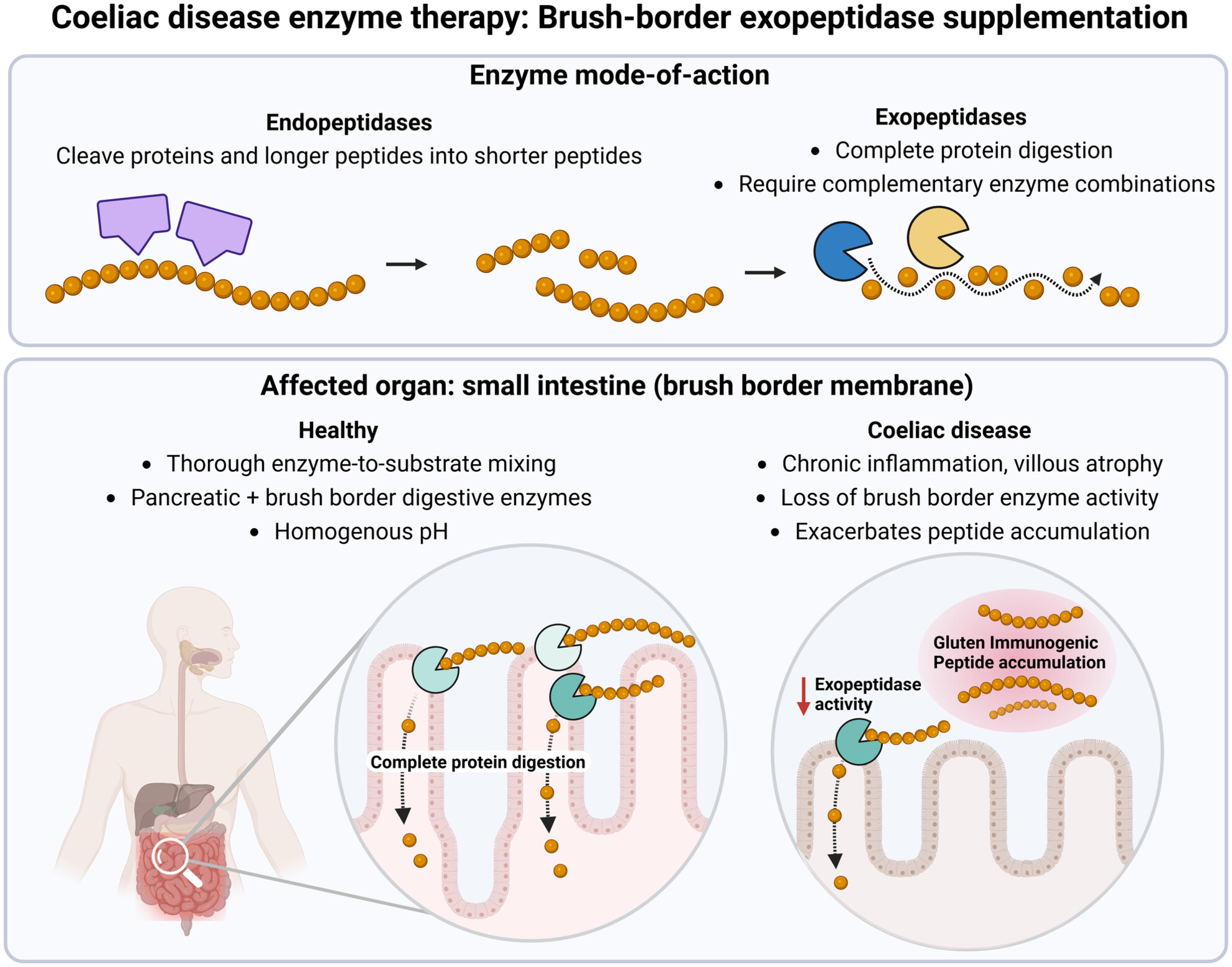
Exopeptidases are key for completing protein digestion, including proline-rich peptides, and are mostly produced by enterocytes of the intestinal brush border membrane. In coeliac disease, chronic inflammation leads to reduced brush border exopeptidase activity, exacerbating peptide accumulation. Exopeptidase supplementation could support, enhance and/or replace this critical enzyme function in patients.
CLINICAL TRIAL
Clinical Trial to Assess the Safety and Tolerability of Anti-IL 23 Monoclonal Antibody Guselkumab in Patients With Alcohol-Associated Liver Disease
- Pages: 1140-1151
- First Published: 14 February 2025
Clinical Trial: A Phase 2b Study to Evaluate the Efficacy and Safety of MK-3655 in Individuals With Pre-Cirrhotic MASH
- Pages: 1152-1162
- First Published: 21 February 2025
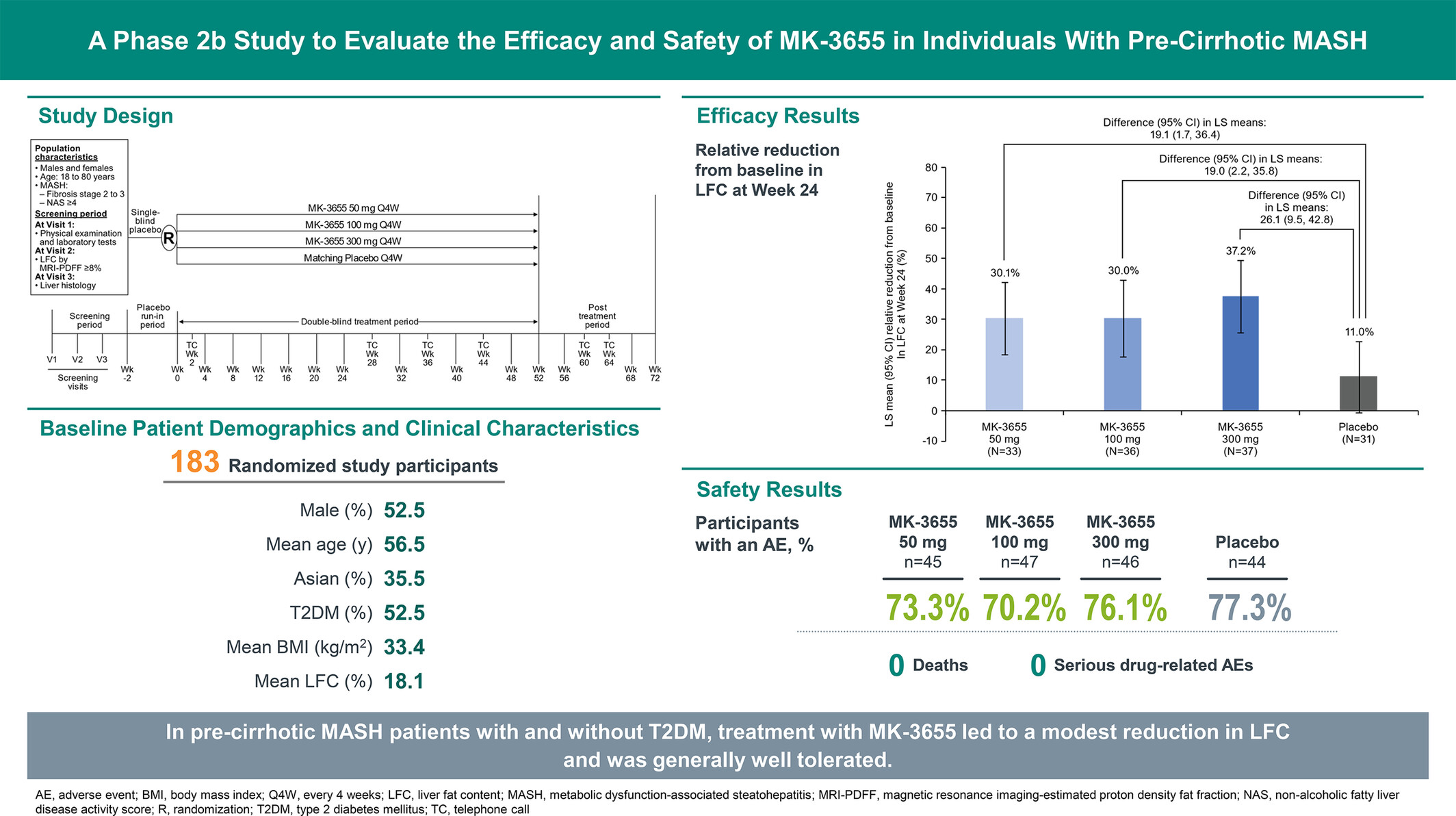
This Phase 2b study examined the safety and efficacy of MK-3655, a monoclonal antibody that binds β-klotho and selectively activates the FGFR1c/β-klotho co-receptor complex, in patients with pre-cirrhotic MASH. Treatment with MK-3655 was generally well tolerated and resulted in a modest reduction in liver fat content at 24 weeks.
GLP-1 RA FOR MASLD AND TYPE 2 DIABETES
Glucagon-Like Peptide-1 Receptor Agonists and Liver Outcomes in Patients With MASLD and Type 2 Diabetes
- Pages: 1163-1174
- First Published: 10 January 2025
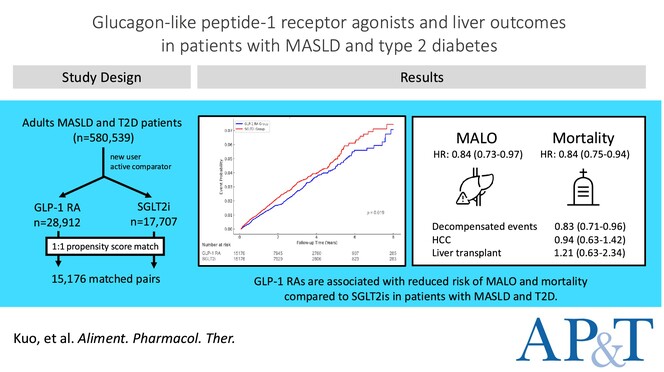
Our study addresses a critical gap in the current literature by providing the direct comparison of glucagon-like peptide-1 receptor agonists (GLP-1 RAs) and sodium-glucose cotransporter-2 inhibitors (SGLT2is) in reducing major adverse liver outcomes (MALOs) in patients with metabolic dysfunction-associated steatotic liver disease (MASLD) and type 2 diabetes (T2D). Our findings suggest that compared to SGLT2i, GLP-1 RA may offer superior long-term liver outcomes for patients with MASLD and T2D.
PREDICTORS OF MORTALITY POST-TIPS
Early Dynamics of Portal Pressure Gradient After TIPS Insertion Predict Mortality
- Pages: 1175-1182
- First Published: 16 January 2025
HEPATIC ENCEPHALOPATHY AND MORTALITY AFTER TIPS
Post-TIPS Overt Hepatic Encephalopathy Increases Long-Term but Not Short-Term Mortality in Cirrhotic Patients With Variceal Bleeding: A Large-Scale, Multicenter Real-World Study
- Pages: 1183-1196
- First Published: 17 February 2025
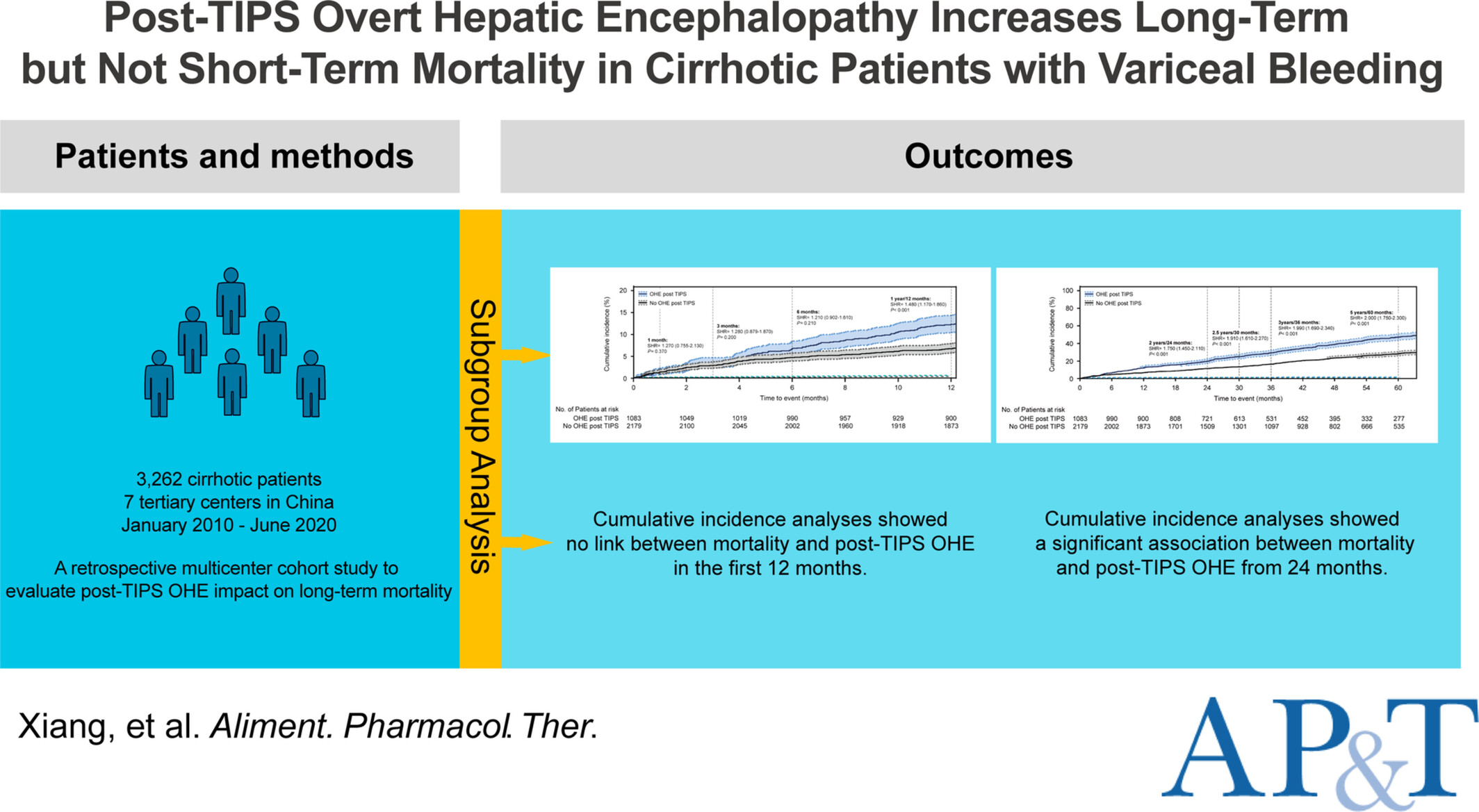
Post-TIPS overt hepatic encephalopathy (OHE) significantly increases long-term mortality in cirrhotic patients beyond 24 months without impacting early survival. This study underscores the importance of sustained monitoring and individualised management strategies to improve long-term outcomes following TIPS.
EFFECT OF OBESITY ON TREATMENT OUTCOMES IN UC
Obesity Is Associated With Worsened Outcomes in Patients With Ulcerative Colitis on Advanced Therapies: A Propensity Matched Cohort Study From the U.S.
- Pages: 1197-1207
- First Published: 22 January 2025
ALT ELEVATION AND HBSAG SEROCLEARANCE AFTER NA CESSATION
Association Between Elevation of Serum Alanine Aminotransferase and HBsAg Seroclearance After Nucleos(t)ide Analog Withdrawal
- Pages: 1208-1217
- First Published: 28 January 2025
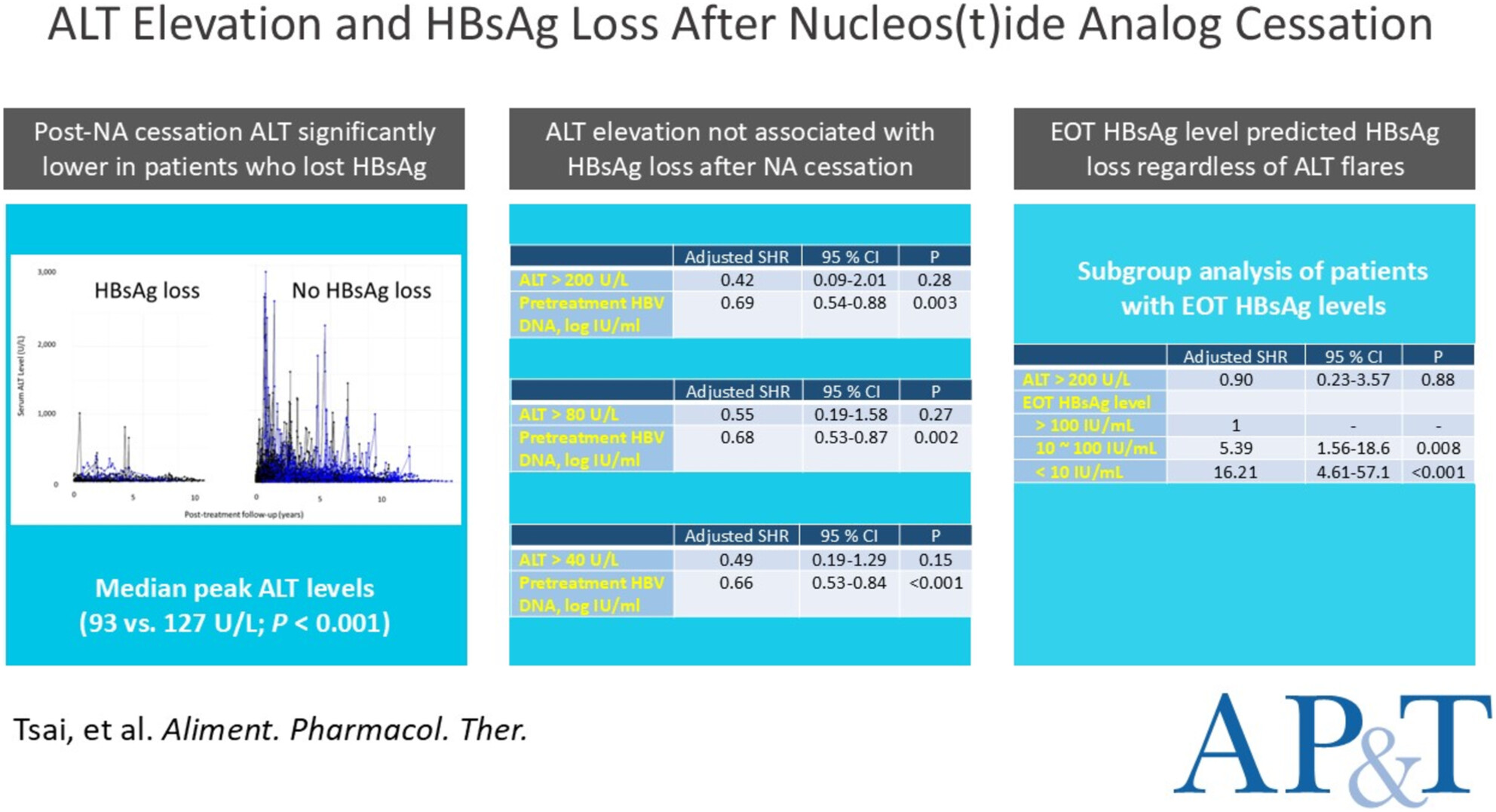
Patients who achieved HBsAg seroclearance significantly exhibited lower peak alanine aminotransferase (ALT) levels compared to those who did not during the off-therapy period. ALT elevation after NA cessation was not associated with HBsAg seroclearance in the multivariable analyses adjusted for HBV DNA levels at treatment initiation or HBsAg levels at treatment cessation.
IMPROVING DIAGNOSIS OF INTESTINAL TUBERCULOSIS
Crohn's Disease With Latent Tuberculosis Infection or Intestinal Tuberculosis: Rapid Discrimination by Targeted Next-Generation Sequencing
- Pages: 1218-1225
- First Published: 04 February 2025
RISK OF HEPATOCELLULAR CARCINOMA WITH DIRECT ANTIVIRALS VERSUS INTERFERON
Risk of Hepatocellular Cancer in U.S. Patients With Compensated Cirrhosis Treated With Direct-Acting Antivirals Versus Interferon
- Pages: 1226-1237
- First Published: 07 February 2025
INVITED EDITORIAL
Editorial: Linking Overt Hepatic Encephalopathy Post-TIPS to Mortality!
- Pages: 1238-1239
- First Published: 14 March 2025
Editorial: Endoscopic Activity is an Essential Tool for Patients' Management, Even in Mild Crohn's Disease
- Pages: 1240-1241
- First Published: 15 February 2025
Editorial: The Relevance of Hepatic Flares and Quantitative Hepatitis B Surface Antigen After Stopping HBV Polymerase Inhibitors
- Pages: 1242-1243
- First Published: 13 February 2025
Editorial: The Relevance of Hepatic Flares and Quantitative Hepatitis B Surface Antigen After Stopping HBV Polymerase Inhibitors—Authors' Reply
- Pages: 1244-1245
- First Published: 13 February 2025
Editorial: Hyperferritinaemia—An Ironclad Biomarker for the Prognostication of MASLD?
- Pages: 1246-1247
- First Published: 18 February 2025
Editorial: Hyperferritinaemia—An Ironclad Biomarker for the Prognostication of MASLD? Authors' Reply
- Pages: 1248-1249
- First Published: 18 February 2025
Editorial: Surveillance Colonoscopy for Detection of Neoplasia in Inflammatory Bowel Disease—Is Dye-Based Chromoendoscopy Always the Final Answer?
- Pages: 1250-1251
- First Published: 25 February 2025
Editorial: Surveillance Colonoscopy for Detection of Neoplasia in Inflammatory Bowel Disease—Is Dye-Based Chromoendoscopy Always the Final Answer? Authors' Reply
- Pages: 1252-1253
- First Published: 25 February 2025
Editorial: Balancing the Yin and Yang of Alcohol-Associated Liver Disease—Integrating Pathophysiology, Liver-Directed Therapy and Addiction Management
- Pages: 1254-1255
- First Published: 04 March 2025
Editorial: Balancing the Yin and Yang of Alcohol-Associated Liver Disease—Integrating Pathophysiology, Liver-Directed Therapy, and Addiction Management. Authors' Reply
- Pages: 1256-1257
- First Published: 28 February 2025
Editorial: Direct-Acting Agents and Risk of Hepatocellular Carcinoma—The End of Controversy
- Pages: 1258-1259
- First Published: 12 February 2025
LETTER TO THE EDITOR
Letter: ‘Early Ileal Resection in Crohn's Disease Is Not Associated With Severe Long-Term Outcomes: The ERIC Study’
- Pages: 1260-1261
- First Published: 24 February 2025
Letter: Early Ileal Resection in Crohn's Disease Is Not Associated With Severe Long-Term Outcomes: The ERIC Study: Authors' Reply
- Pages: 1262-1263
- First Published: 24 February 2025
Letter: Lubiprostone—A Novel Therapeutic Avenue for Gastrointestinal Complications in MASLD
- Pages: 1264-1265
- First Published: 18 February 2025
Letter: Lubiprostone—A Novel Therapeutic Avenue for Gastrointestinal Complications in MASLD. Authors' Reply
- Pages: 1266-1267
- First Published: 18 February 2025
Letter: Iron Metabolism in SLD—A Complex Puzzle That Requires Further Evaluation
- Pages: 1268-1269
- First Published: 28 February 2025
Letter: Iron Metabolism in SLD—A Complex Puzzle Yet to be Explored. Authors' Reply
- Pages: 1270-1271
- First Published: 04 March 2025




